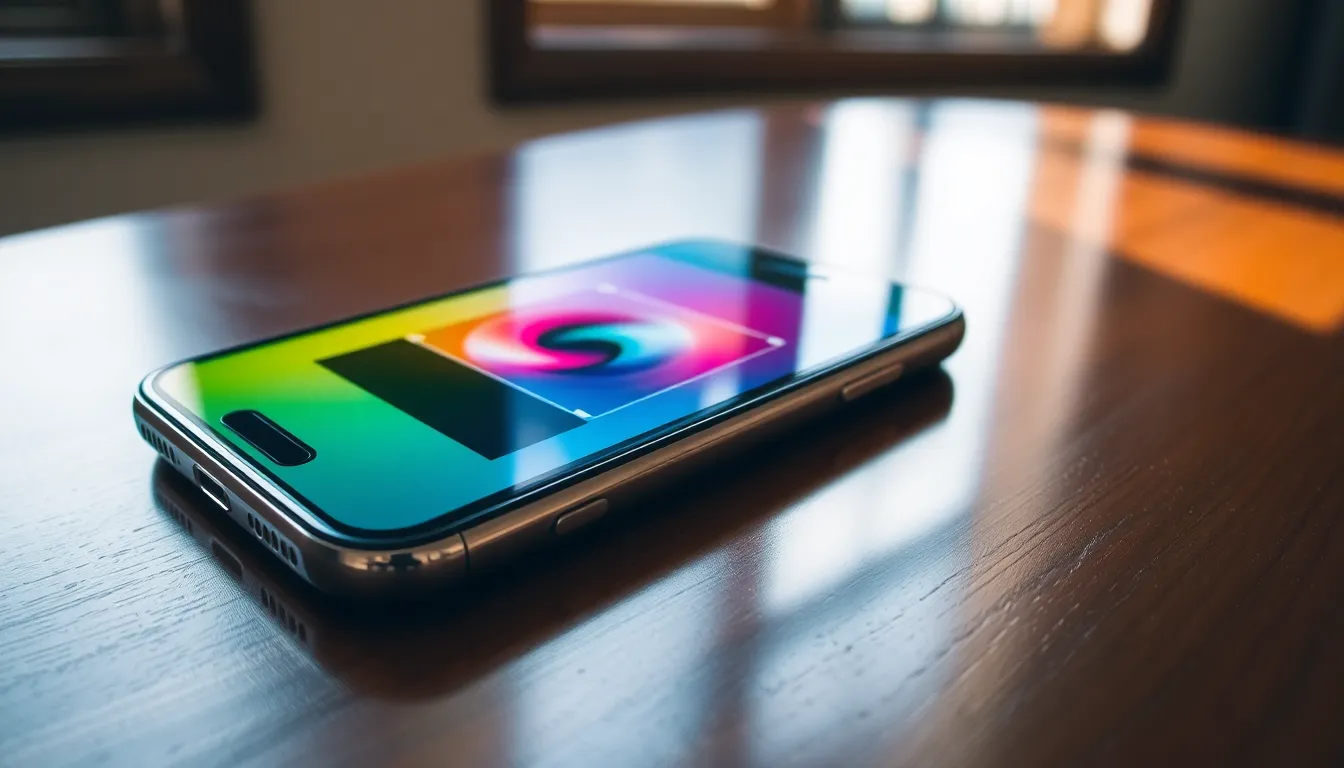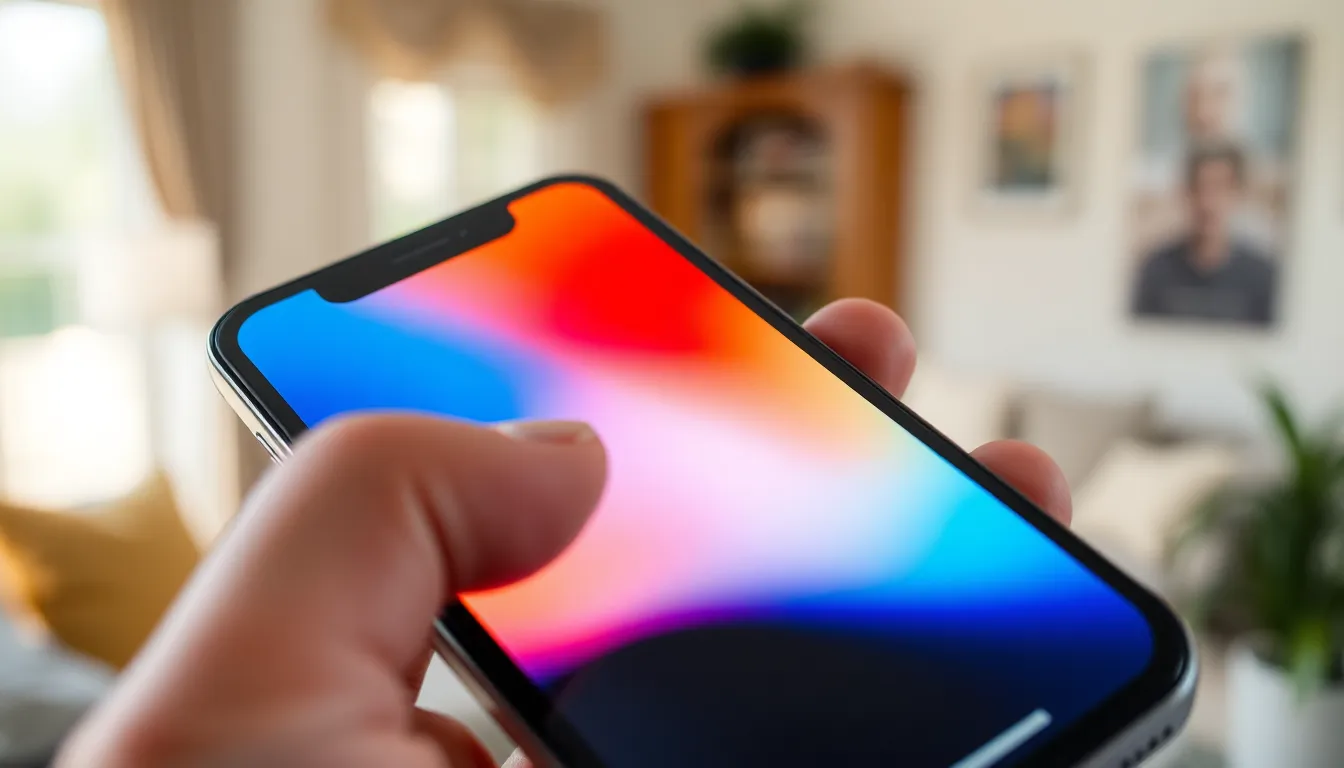Ever found yourself squinting at your iPhone screen, wondering if it’s playing tricks on you? You’re not alone. A miscalibrated screen can turn even the simplest tasks into a frustrating game of “guess what I meant to tap.” Luckily, calibrating your iPhone screen isn’t rocket science—unless, of course, you’re trying to land a spacecraft.
Table of Contents
ToggleUnderstanding Screen Calibration
Screen calibration involves adjusting the display settings to ensure accurate color representation and touch response. A properly calibrated screen enhances user experience, allowing for precise tapping and swiping.
Calibration typically adjusts settings such as brightness, contrast, and color balance. Miscalibrated screens may lead to distorted colors and imprecise touch recognition. Users often encounter issues like colors appearing overly saturated or touch responses lagging.
Accessing calibration settings is simple. Users navigate to the Display settings on their iPhones. Once there, options like True Tone and Night Shift can be adjusted. True Tone automatically modifies the screen’s color temperature based on ambient light. Night Shift reduces blue light exposure during evening hours, promoting better sleep.
Regular screen calibration is vital for maintaining optimal display quality. Color accuracy impacts photo editing, video watching, and gaming experiences. Ensuring the screen reflects true-to-life colors enriches interactions with apps and content.
Environmental factors also contribute to screen performance. Lighting conditions in a room can influence how colors appear on the screen. For instance, bright sunlight may wash out colors, while low light could enhance them. Calibration should consider these external factors for the best results.
Utilizing third-party calibration apps offers more control over adjustments. These apps provide advanced features for fine-tuning various display aspects. However, the built-in settings often suffice for most users. For general use, the native options already ensure a satisfactory experience.
Screen calibration directly influences an iPhone’s usability and visual appeal. Prioritizing calibration ensures users get the most accurate and responsive display possible. Regular adjustments keep screens in top condition, improving overall satisfaction.
Reasons to Calibrate Your iPhone Screen

Calibrating an iPhone screen significantly enhances user experience. Several reasons underscore the necessity of this process.
Improved Color Accuracy
Achieving accurate color representation enhances visual enjoyment. Miscalibrated screens can display distorted colors, impacting activities like photo editing and video watching. Calibration ensures colors appear as intended, making images and videos vibrant and true to life. This adjustment allows users to appreciate the fine details in their media. For creative professionals, accurate colors lead to better decision-making during projects. Frequent calibration helps maintain color integrity, especially under varying lighting conditions.
Enhanced Touch Sensitivity
Optimizing touch response enhances device usability. A miscalibrated screen may lead to unresponsive touch, creating frustration while interacting with apps and features. Calibrating the screen ensures that each tap, swipe, and gesture receives proper recognition, contributing to smoother navigation. Adjusted settings help users interact with their devices confidently, whether playing games or browsing. This improvement reduces the chances of accidental inputs, improving overall productivity and satisfaction. Regular calibration keeps touch sensitivity at its best, resulting in a seamless user experience.
How to Calibrate My iPhone Screen
Calibrating an iPhone screen enhances user experience, ensuring accurate color and touch response. Follow these steps to calibrate effectively.
Step 1: Check Software Updates
Begin by checking for the latest software updates. Apple frequently releases updates, which may include improvements for display settings. To check, navigate to Settings, then select General, and tap on Software Update. If an update is available, download and install it. Keeping the software up to date is crucial for optimal screen performance.
Step 2: Adjust Brightness and Color Settings
Next, adjust the brightness and color settings. Access Settings, go to Display & Brightness, and slide the brightness bar according to preference. For enhanced color accuracy, explore settings for True Tone and Night Shift. These features adjust the display based on ambient light, improving viewing comfort. Experimenting with these settings can significantly impact screen calibration.
Step 3: Use Calibration Tools
Lastly, consider using built-in calibration tools. Navigate to Settings, then select Accessibility, and tap on Display & Text Size. From here, explore options such as Color Filters to enhance color accuracy. For precise touch response, consider third-party apps that offer advanced calibration features. These tools provide additional customization, ensuring a balanced screen experience.
Common Calibration Tools and Apps
Calibration tools and applications enhance the accuracy of iPhone displays through various features. Built-in tools like True Tone and Night Shift adjust color temperature based on ambient light, allowing for a more natural viewing experience. Users find accessing these settings convenient within the Display & Brightness menu.
Third-party calibration apps offer additional features for those seeking precision. Apps such as Display Calibration and Color Calibration allow users to adjust brightness and contrast with fine detail. These applications provide patterns and color tests, helping users identify discrepancies in color representation.
Utilizing color filter options found in Accessibility settings improves visibility for individuals with color vision deficiencies. These filters can be tailored to specific needs, thereby ensuring a more comfortable visual experience.
Regularly updating the iPhone’s software also supports optimal calibration of the screen. System updates often include enhancements to display quality that can improve overall performance.
Some users may prefer to consult professional calibration services for detailed adjustments. These services often utilize advanced equipment to achieve precise color accuracy.
Overall, both built-in tools and third-party apps serve as valuable options for calibrating an iPhone screen. Prioritizing regular calibration helps maintain color integrity and touch responsiveness.
Troubleshooting Calibration Issues
Calibration issues can arise despite following the proper steps to adjust an iPhone screen. Users might notice problems like inconsistent colors or unresponsive touch interactions. Identifying these issues early can minimize disruption.
Checking display settings is a crucial first step. Users should confirm that options like True Tone and Night Shift are activated properly. If problems persist, resetting these settings to default may resolve conflicts.
Low battery levels often impact device performance, including screen responsiveness. Users should ensure their iPhone has sufficient charge before troubleshooting more complex issues. Moreover, performing a simple restart can refresh the system and fix minor glitches.
If calibration software fails to work, updating the iOS can be beneficial. Software updates frequently include fixes for bugs that affect screen calibration. Users can navigate to Settings, select General, and choose Software Update for the most current version.
Third-party apps may not always align with iPhone settings, causing discrepancies. It’s advisable to check app permissions and updates to improve their integration with the device. Alternatively, users might opt to remove and reinstall the app to clear potential issues.
Frequent calibration might indicate hardware problems as well. In such cases, consulting Apple support or visiting an authorized service provider can provide answers. They can accurately diagnose whether the issue stems from the display or another component.
Being proactive about calibration can enhance device performance. Regular checks can reduce frustration related to touch sensitivity and color accuracy over time. Users should keep track of the device’s performance to address issues promptly.
Regularly calibrating an iPhone screen is essential for maintaining optimal display performance. By adjusting settings like brightness and color balance users can ensure accurate color representation and improved touch responsiveness. This not only enhances everyday interactions but also elevates experiences in creative tasks like photo editing and gaming.
Utilizing built-in tools and considering third-party apps can provide users with the resources they need for precise adjustments. Staying proactive about calibration helps prevent frustration and ensures the device remains a reliable companion for all tasks. With a few simple steps users can enjoy a more vibrant and responsive screen that meets their needs.




